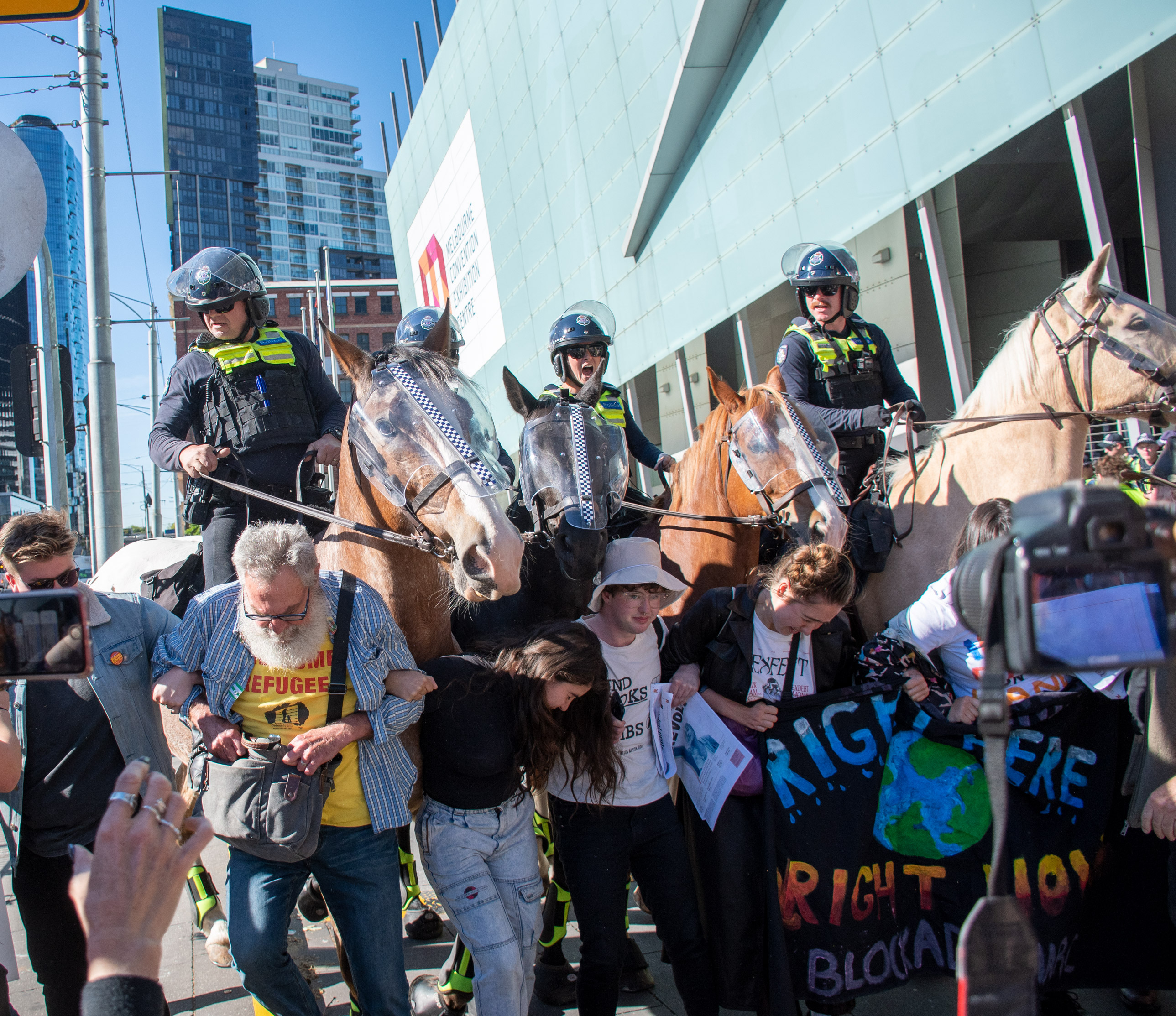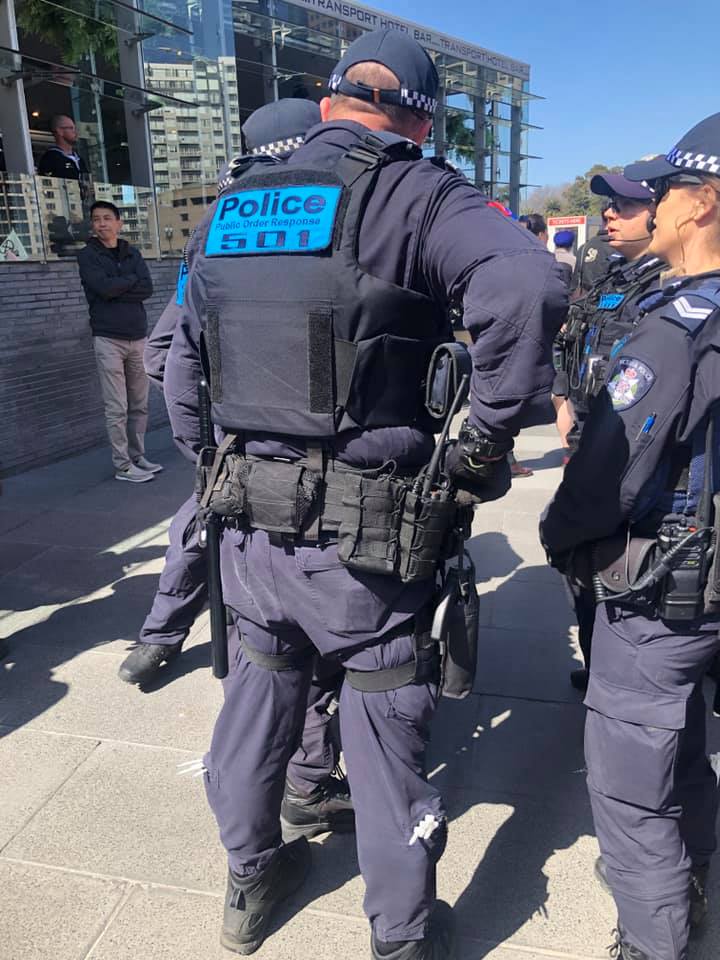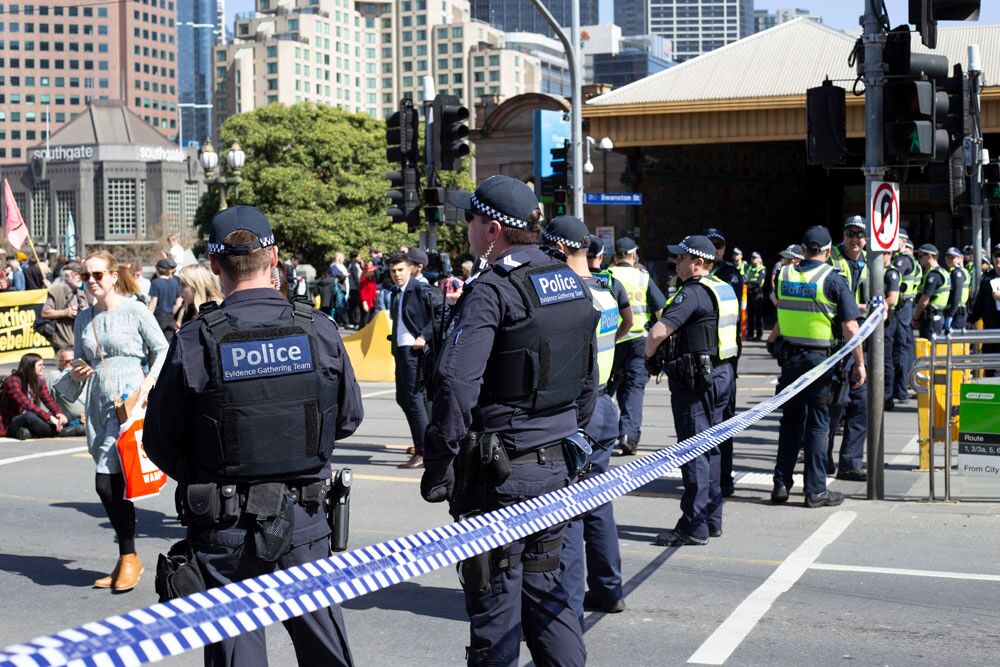What is ‘Strategic Incapacitation’ and why is it important for activists to understand it?
This post is an excerpt from our recent Legal Observer Report: The Policing of the IMARC Protests.
Melbourne Activist Legal Support has tracked the rise in coercive and excessive crowd control tactics by Victoria Police over several years at protest events throughout Victoria.1
Victoria Police’s approach to protests has been characterised by a lack of willingness to tolerate community disruption when unfamiliar forms of protest are used, indicated by unnecessarily aggressive arrests, the unlawful use of police powers, an unnecessarily antagonistic attitude toward people engaged in protest combined with a disregard for their dignity and welfare.2
The continued misuse of OC aerosols, dangerous use of police horses, weaponry and excessive use of force is taking place in the context of a near total lack of any clear, effective accountability processes when allegations are raised.
The repertoire of public order tactics employed by Victoria Police reflect the rapid expansion of the Public Order Response Team (PORT) as the primary riot control capacity in Victoria, and the intelligence and strategic planning centred within the Operations Response Unit (ORU).
See: Who’s who of Victoria Police

Over years we have seen Victoria Police move away from a ‘negotiated management’ approach to protest policing to adopt more of an approach scholars have labelled ‘strategic incapacitation,’ reflecting a global trend in public order policing since 2001.
Strategic Incapacitation is described as a multidimensional policing strategy characterised by the deployment of massive police presence, the use of barriers, ‘preventative’ arrests, selective use of force with an array of ‘less-lethal weapons,’ combined with efforts to control both the production and dissemination of information, media management and unprecedented levels of monitoring and surveillance.3
Our report argues that this tactical repertoire is dangerous and harmful when applied against defiant, disruptive but peaceful protest events and is certainly not fit for purpose in an era when Victoria Police is presenting itself as working within a ‘human rights compliant’ model of protest policing. It suggests that Victoria Police’s commitment to a human rights approach to protest facilitation is contingent upon the focus and form of that protest and varies accordingly.
Strategic incapacitation serves policing imperatives by deliberately containing and hampering and even neutralising protest movements, limiting their growth, size and political effectiveness. The sheer number of police at events and ever-present threat of violence deters new and a broader range of people becoming involved in protest groups, intimidates and scares people from public participation and serves to further the often conflictual and antagonistic attitude toward social movements from some sections of the wider public.
By applying levels of force designed for riots against peaceful protests, police, in alignment with conservative and simplistic media reporting, can successfully reframe a peaceful protest as ‘violent’ thereby adding to the existing demonisation of protest groups by some sections of the media and government. We saw this in the Victoria Police media management during the IMARC protest event.
From a policing perspective this approach serves to keep disruptive or potentially disruptive protest movements smaller and easier to control. It is very apparent that this operational imperative outweighs human rights considerations.
Victoria Police command invests a great deal of energy in ensuring that government and key public agencies sanction their tactical repertoire. This investment acts to shield parliamentarians, human rights bodies, journalists and the wider public from awareness of the substantial danger in this sort of policing. By permitting, encouraging or tolerating policing which undermines the civil and political rights enshrined in Victoria’s Charter of Human Rights and Responsibilities (the Charter) we risk reducing the vital political space we need to maintain and enhance an effective democracy.
This is an excerpt from the Legal Observer Report: The Policing of the IMARC Protests published 7th December 2019. Download a PDF copy of the full 45 page report here.


